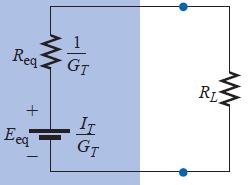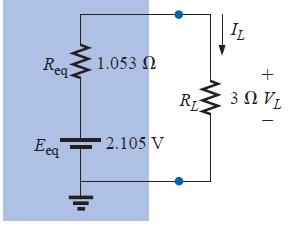Friday, 15 March 2013
MILLMAN’S THEOREM
Do you like this story?
In Millman's Theorem, the
entire circuit can be drawn as a parallel network of branches, each branch
containing a resistor in series with battery combination.
Rules
IT
= I1+I2+I3
GT
= G1+G2+G33)Convert the resulting current source to a voltage source
EEQ
= IT/GT
= ( I1+I2+I3
) / ( G1+G2+G3 )
EEQ
= ( E1G1 + E2G2+ E3G3
) / G1+G2+G3
REQ=
1 / (G1+G2+G3 )
Example
Find
voltage across RL
Solution
IEQ
= I1 + I2 + I3
I1
= 10/5 = 2A
I2
= -16/4 = -4A
I3
= 8 / 2 = 4A
IEQ
= 2 -4 +4 = 2A
REQ
= parallel combinarion of 5Ω,4Ω and 2Ω
= 1.053Ω
EEQ
= REQ*IEQ= 2 * 1.053 = 2.106V
By
voltage division rule we get VL
VL
= 2.106 * 3 /( 1.053 + 3 )
= 1.558 V
IL
= 2.106 /( 1.053 + 3 )
= 0.519A
VL
= 1.558 V IL = 0.519A

This post was written by: Author Name
Author description goes here. Author description goes here. Follow him on Twitter
Subscribe to:
Post Comments (Atom)



















0 Responses to “MILLMAN’S THEOREM”
Post a Comment